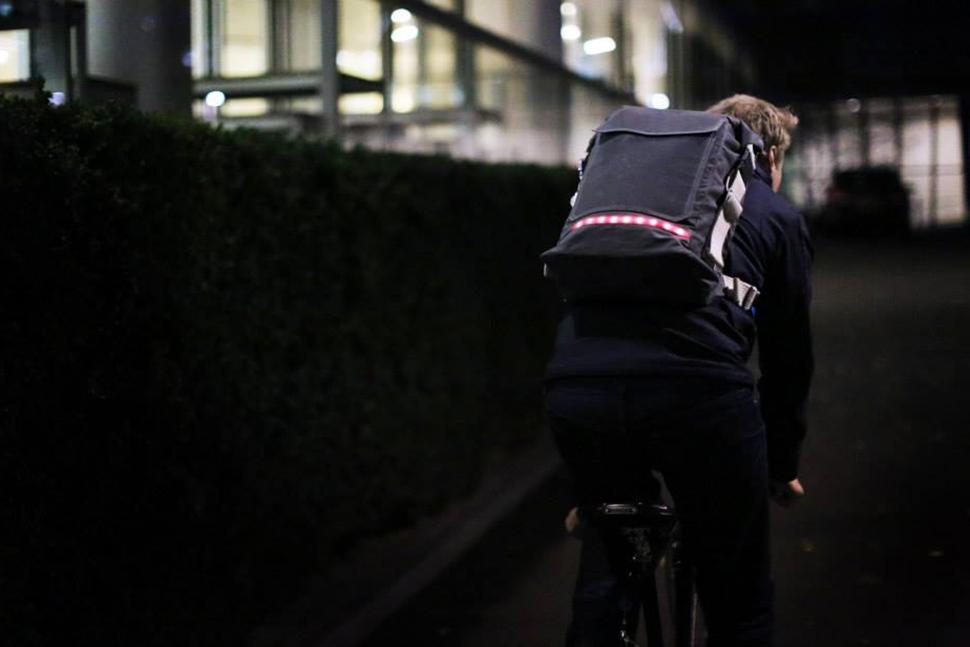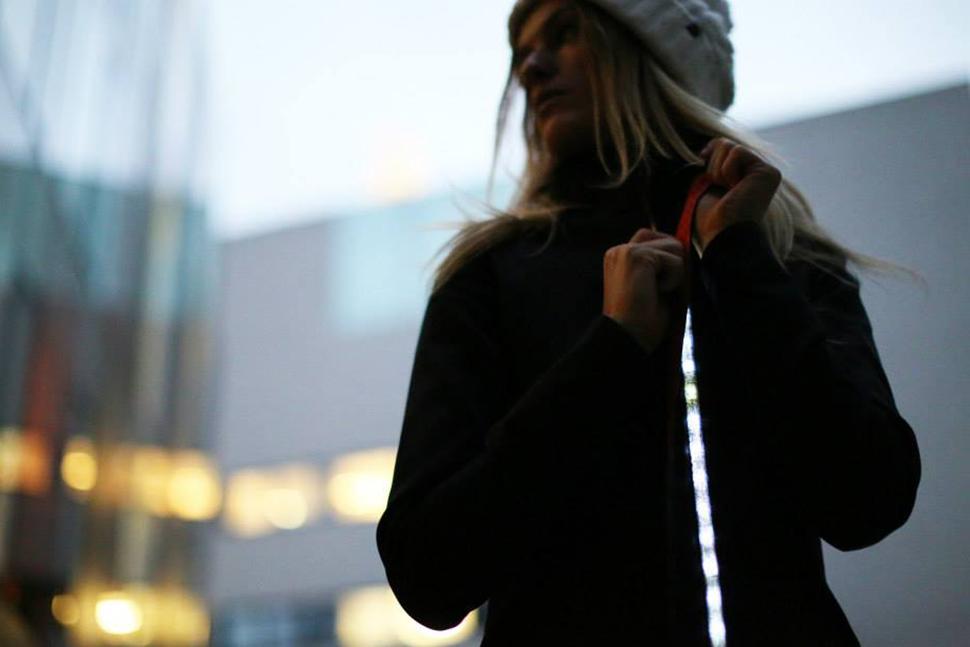There’s fashion and there’s safety gear, and never the twain shall meet, right?
Wrong.
It used to be that cyclists didn’t have much of a choice — either drape yourself in neon colors and reflector stripes, or dress like a normal person and run the risk of becoming roadkill on your way back from work. There wasn’t much of a middle ground before, but now, thanks to up-and-coming London-based startup Lumo, you’ll no longer have to sacrifice fashion for the sake of safety, or vice-versa.
Lumo gear was built from the ground up to give cyclists the best of both worlds. During the day, the company’s jackets and bags look like normal everyday apparel — no reflective seams or bright, gaudy colors that assault your eyes. But despite their unassuming appearance, the jackets and bags are outfitted with rows of high-brightness LED strips on the front and back, subtly hidden within the construction of the design.

Almost completely concealed until they’re switched on, these lights are visible from over a quarter mile away, and are placed in such a way that they’re visible regardless of your riding position. The LEDs are completely waterproof, washable, and powered by a removable USB-rechargeable battery unit that’s tucked away in a small inside pocket.
And it gets even better. In addition to all these high tech bells and whistles, Lumo’s jackets are packed with a number of low-tech design elements that make them more bike-friendly. Dropped hems help you avoid showing off the dreaded “plumbers crack” while you ride, and the jacket’s stretchable shoulders give less resistance as you reach forward for your handlebars. Lumo also treats each garment with a special fabric finish to add water resistance, dirt repellence, and breathability.
Sound like something you’d be interested in? Head over to Lumo’s recently-launched Kickstarter campaign to pledge your support and help get it off the ground. Back the project now during the early stages and you can lock down a jacket or backpack before the price jumps up. Jackets are available in both men’s and women’s sizes and start at $264, with the backpack available for around $200.







